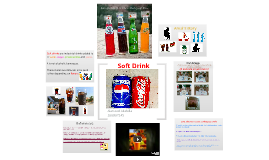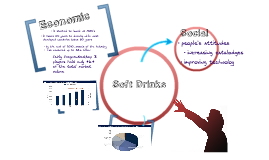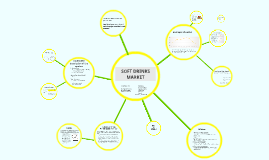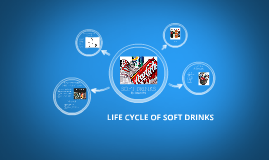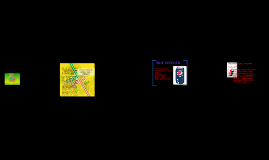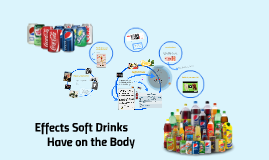Soft Drinks
Transcript: Effect on Society & the Environment Some studies have suggested a link between drinking soda and obesity. Soda is high in sugar and calories. Combined with its practically nonexistent nutritional value, soda may cause drinkers to pack on the pounds without receiving even the smallest nutritional benefit. Surprisingly, drinking diet soda has been linked to weight gain as well. Drinking soda has been shown to contribute to tooth decay. Spokesmen for the soda industry have conceded this point. Interestingly, in recent years, levels of tooth decay in the United States and similarly developed countries have decreased. This is in spite of the fact that more people are drinking soda than ever before. At the same time, levels of obesity have risen. Obviously, the sugar consumption involved in drinking soda is cited for causing tooth decay. However, the acid in soda has been shown to erode tooth enamel, leading to dental cavities as well. In fact, the acid in soda can begin damaging enamel just 20 minutes after drinking soda. Putting aside the fact that soda has no nutritional value or that it contributes to childhood obesity, it turns out that drinking soda is worse for the environment than bottled water. First of all, the ingredients in regular soda include high-fructose corn syrup (HFCS), replacing real sugar years ago due to government subsidies for corn farms, pesticides, and fertilizers. If we stop buying soda, the demand will go down. This would be better for the environment. Studies have shown that HFCS also contains mercury. Consumption of HFCS, now being “re-branded” as corn sugar can lead to diabetes, cancer, as well as obesity. Second, for those that think diet soda is a better choice, think again! Sugar substitutes have also been attacked for years. Some think that ingredients like Splenda are safe, but their long term effects are not known. Moreover, researchers and medical professionals have found that when people drink diet sodas their bodies react as if they are about to get some calories, but when they don’t, metabolic shifts that can lead to weight gain take place. Third, consider the fact that soda comes in plastic bottles and aluminum cans. While cans are often recycled, bottles are not. The energy that it takes to produce, bottle, ship, transport and load up all the vending machines, grocery stores and fast food outlets is staggering. Switching to water can significantly reduce CO2 emissions. In short, soda takes fuel to truck from the bottling facilities to our stores, it relies on genetically modified (GMO) corn crops and contains carcinogenic and/or toxic ingredients, whether its “diet” or regular. When you consider the fact that tap water is simple, healthy and free from the tap, why not go the natural route? Your body AND the environment will thank you! The Coca-Cola Company announced plans to increase its soft drink prices by 3% to 4% at the end of July. This is the second price increase for Coke within 2011, following a 2% increase earlier this year. The company indicated that the price increase, which will be implemented on July 31, is due to higher-than-anticipated commodity costs. Soft drink companies spend billions on advertising. Much of these marketing efforts are aimed at children through playgrounds, toys, cartoons, movies, videos, charities and amusement parks; and through contests, sweepstakes, games and clubs via television, radio, magazines and the internet. Their efforts have paid off. Last year soft drink companies grossed over $57 billion in sales in the U.S. alone, a colossal amount. It appears that bigger brands are continuing to increase prices because their costs of production and distribution have increased. It also appears that continued price adjustments may be forthcoming and that all brands will soon be forced to revise their prices accordingly higher. These price increases are likely to continue across the the food spectrum, including within generic, gourmet and restaurant prices. Analysts have anticipated coming beverage price increases, and several believed that some of the smaller soft-drink manufacturers, such as the Dr. Pepper Snapple Group (DPS) were merely waiting out such price increases by the leading manufacturers. From 1985 to 1997, school districts decreased the amounts of milk they bought by nearly 30% and increased their purchases of carbonated soft drinks. Diet sodas that are low in calories are high in sodium. Too much salt in the diet may cause more calcium to be excreted in the urine and increase the risk of osteoporosis. Laws and Policies The Department of Health and Human Services has the authority to determine which artificial sweetners are used in the production of soft drinks. HOWEVER: Though it seems their intentions are to safeguard the health of the public... Policies to enhance student health across the country led to the passing of school regulations, (such as the High School Soda Ban and K-8 Soda Ban) eliminating the sale of soft






